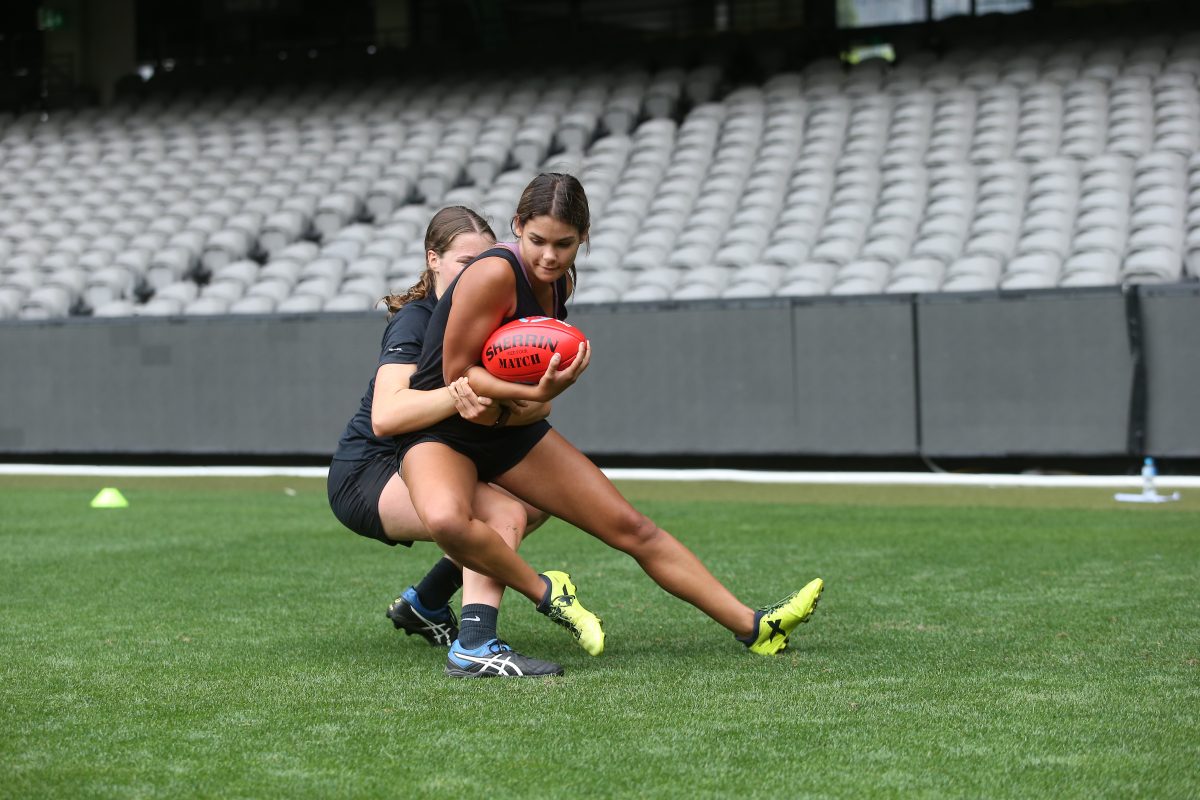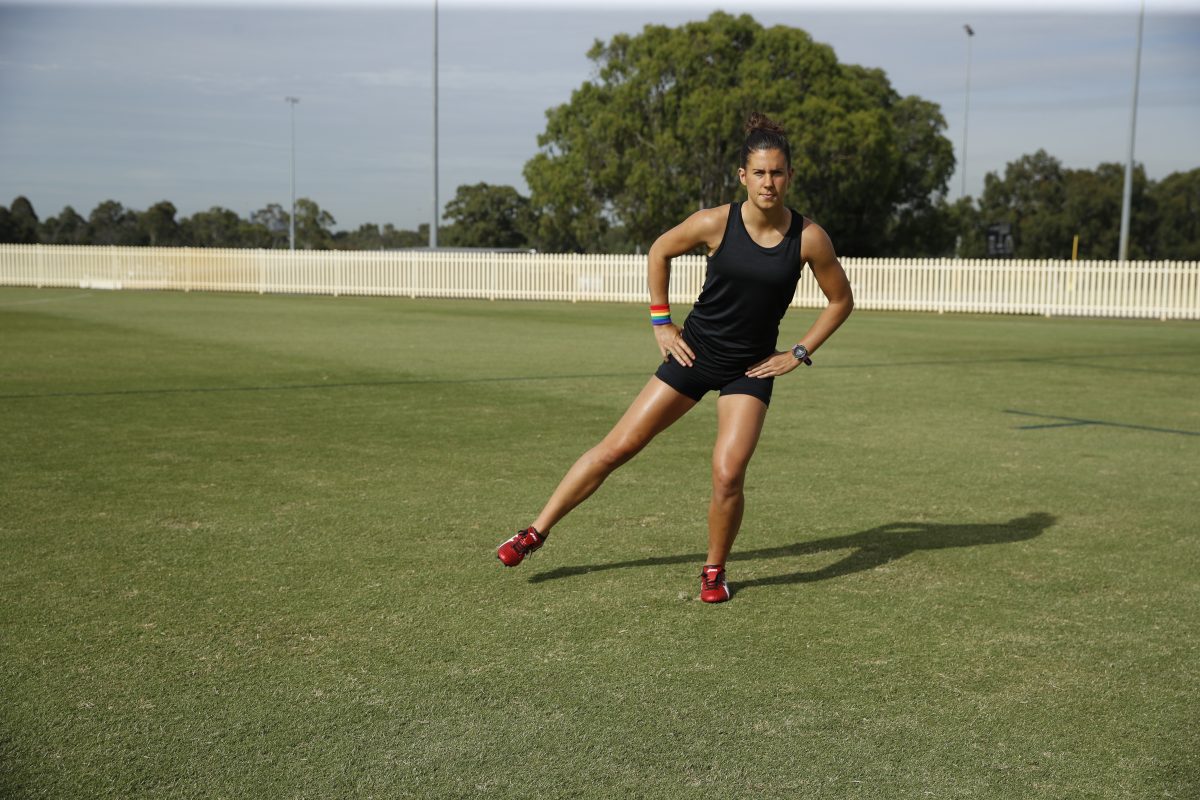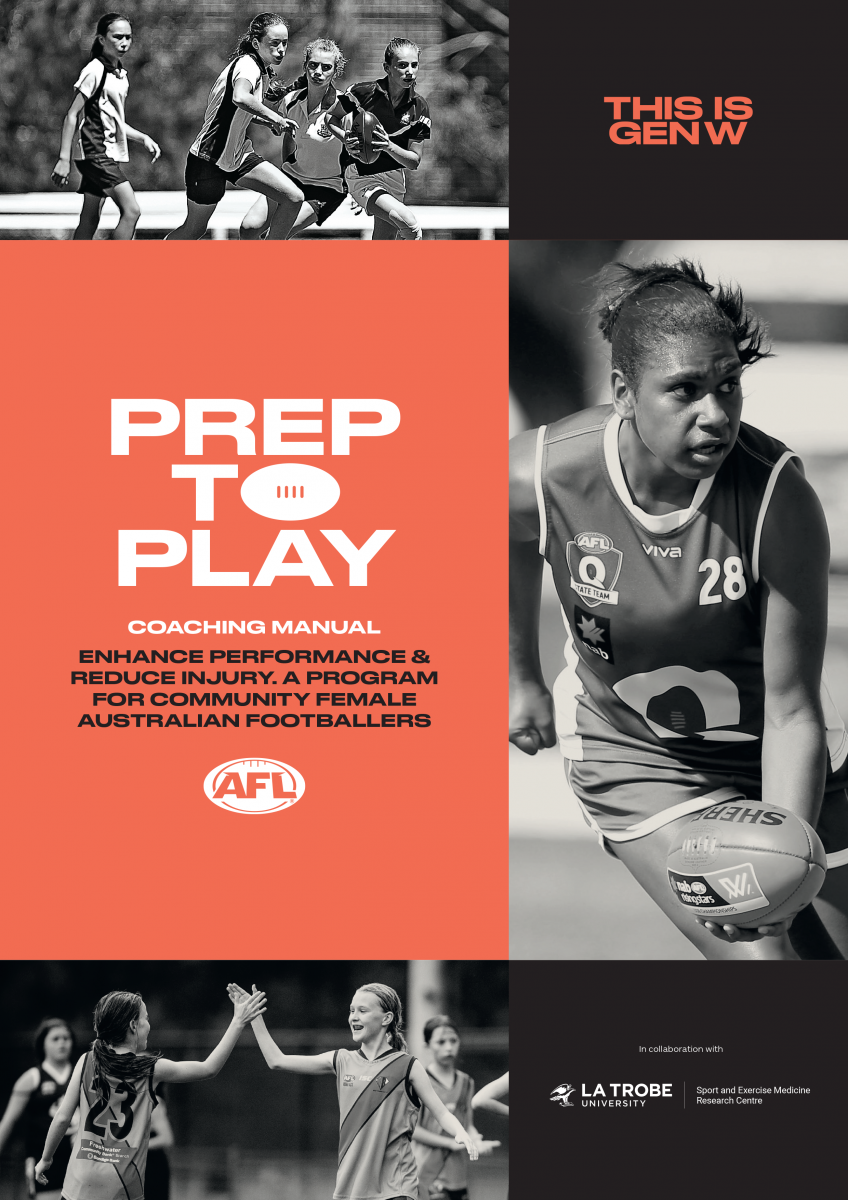PREP TO PLAY RESEARCH
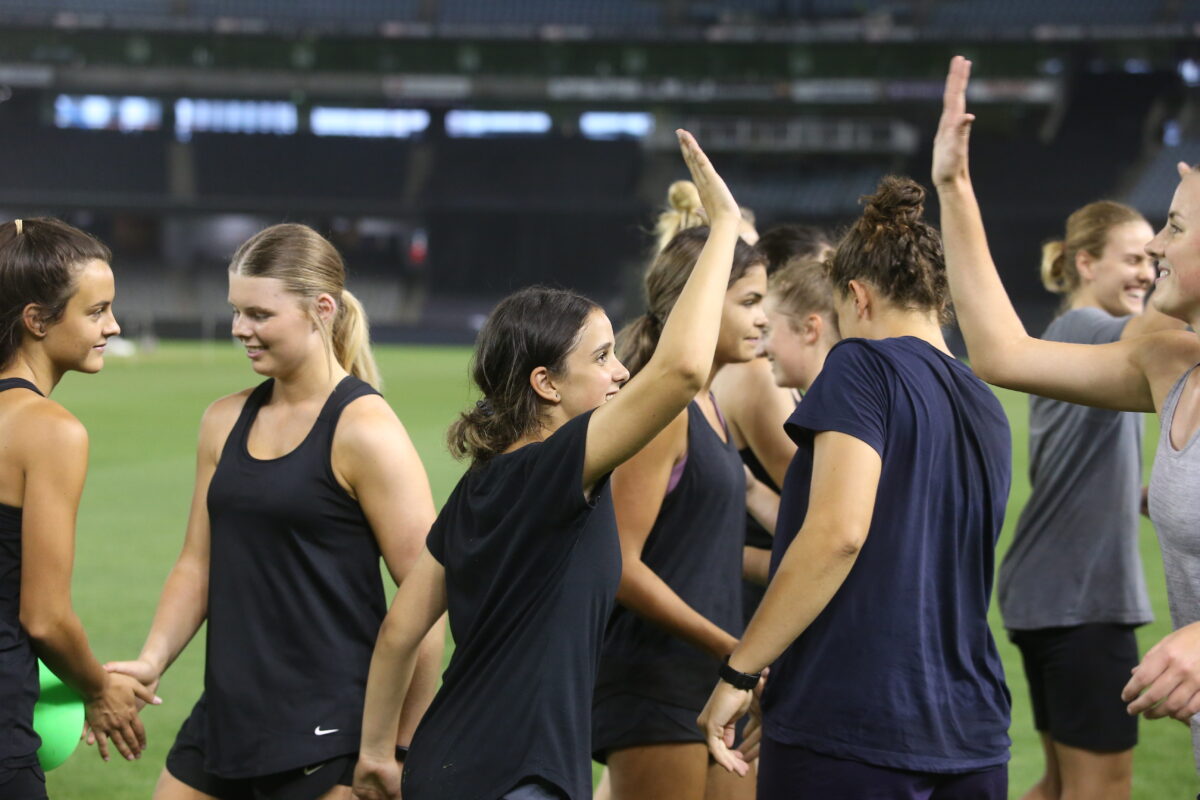
ABOUT THE PROGRAM
Many people think that women’s football is a high-risk sport for injury, but little is known about injury rates in community level football. Injury prevention programs within various sports exist, but the use of injury prevention programs in community football is not yet known. The aim of this research program is to understand injury rates and how we can support clubs, coaches and players to include injury prevention programs into their training and game preparation.
This page will provide updates on the program, research projects – for clubs, coaches, players, parents, trainers, support staff, exercise and medical professionals.
Contact prep2play@latrobe.edu.au for all enquiries




WHY DO WE NEED PREP TO PLAY?
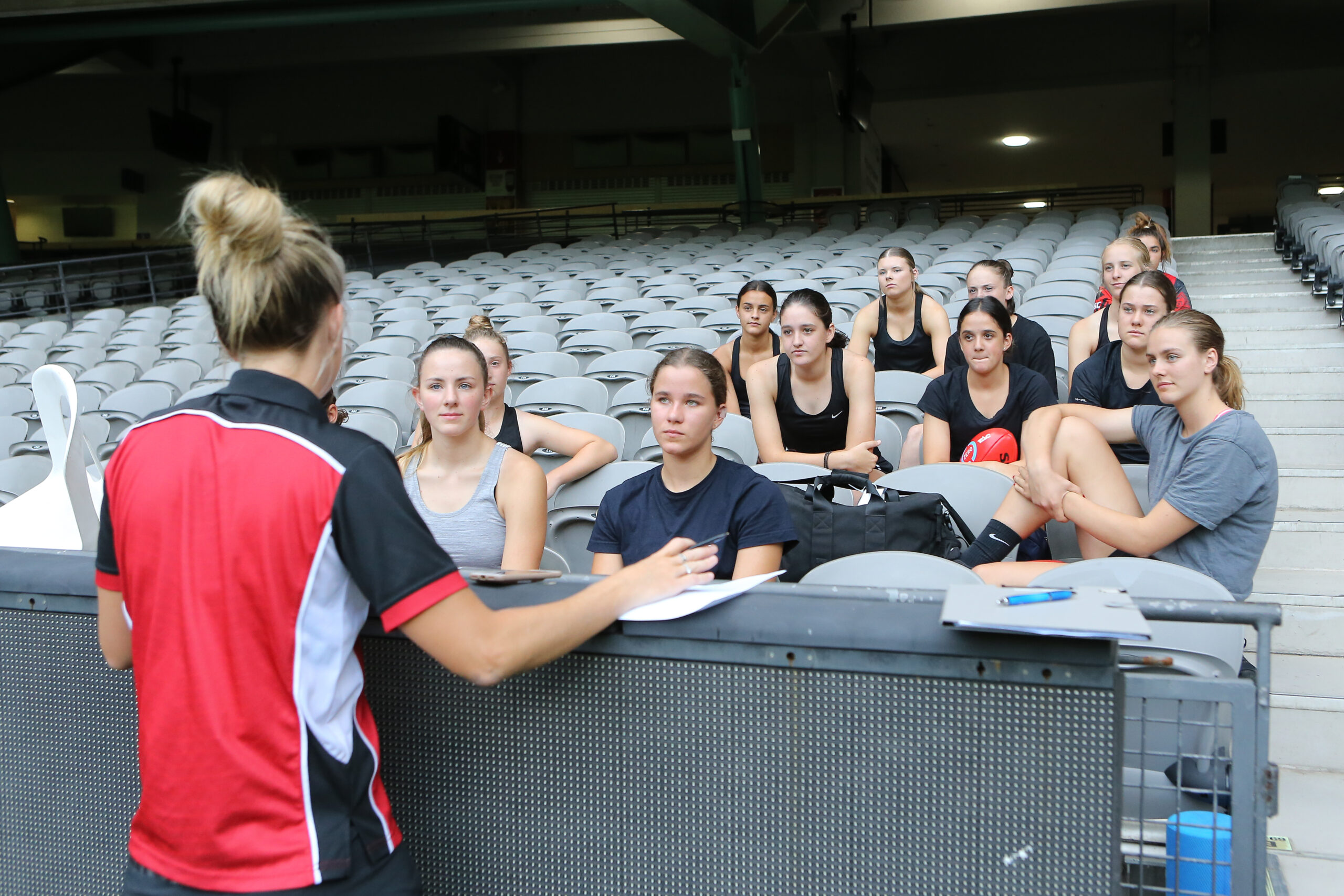
THE DAMNING FACTS
Women and girls’ participation in Australian Football has increased dramatically. Unfortunately, women playing AFLW have the highest risk of anterior cruciate ligament (ACL) injury worldwide compared to other sports, and 5-7 times higher risk than men playing AFL (Webster et al 2021). Injury risk may be a deterrent for players and parents to play football. Women also have worse outcomes after ACL injury compared to men (e.g. less likely to return to sport, worse symptoms).
THE GOOD NEWS
Injury prevention programs in other women’s sports (e.g. soccer, basketball, handball) can reduce ACL injuries by up 40-60% (Crossley et al 2020, Webster et al 2018, Sugimoto et al 2012).
OUR MISSION
Our mission was to co-design an injury prevention program with the AFL, coaches, players, AFLW staff, and injury prevention experts. The uptake of injury prevention programs is low for many reasons (e.g. time to incorporate, lack of sport specificity, lack of confidence from coaches to deliver). Therefore, we aimed to design a program that addressed common barriers and was specific to the unique demands and context of Australian Football. Our current program of research is focussed on evaluating the Prep to Play program.
HOW DID WE DEVELOP THE PREP TO PLAY PROGRAM?
The development of Prep to Play started in 2017 when the AFLW competition began. And we are still going – we are always evaluating and getting feedback on the program for different settings and age groups! The steps are outlined in Figure 1 below, and details and links to the papers are provided in each of the sections.
Figure 1. Creating Prep to Play PRO. Read the paper of the entire process : Bruder et al 2021
STEP 1
Organisational support was gained from the AFL, which included understanding the injury priorities and set research priorities.
STEP 2
We needed to understand from the research
(i) what were the injury injury rates, mechanisms and risk factors were in other similar sports?
(ii) what was the current physical profile of the athletes?
(iii) what were athletes perspectives on injury prevention in the AFLW?
(iv) was there was any evidence to support the effectiveness of injury prevention programs in women playing football?
STEP 3
We then consulted injury prevention experts, AFLW medical and high performance staff, the AFL Health and Safety, AFL Coaching, coaches and players at the elite and community level to help inform the content of the program and create some resources for the players and coaches. Firstly this involved an exercise (called concept mapping) where 22 physiotherapists and 5 AFLW players brainstormed the critical elements of an ACL injury prevention program (Bruder et al 2020)
STEP 4:
STEP 5:
STEP 6:
STEP 7:
Click to view the program posters and videos
EVALUATING PREP TO PLAY IN COMMUNITY WOMEN'S FOOTBALL
AIMS OF THE CLINICAL TRIAL
To evaluate if a “supported implementation strategy” compared to an unsupported strategy (online resources):
- Can increase use of Prep-to-Play
- Can reduce serious knee and head injuries
- Is cost-effective
View the protocol paper for more details (Patterson et al 2022)
INTERVENTION
The supported implementation strategy included a workshop delivered by a local Prep to Play Physio to coaches, players, and support staff, and two training visits to support the teams after the workshop. The workshops and training visits occurred throughout the 2021 and 2022 seasons. Prep to Play program use and injuries (all body regions) were tracked weekly from the beginning of 2021 until the end of the 2022 season.
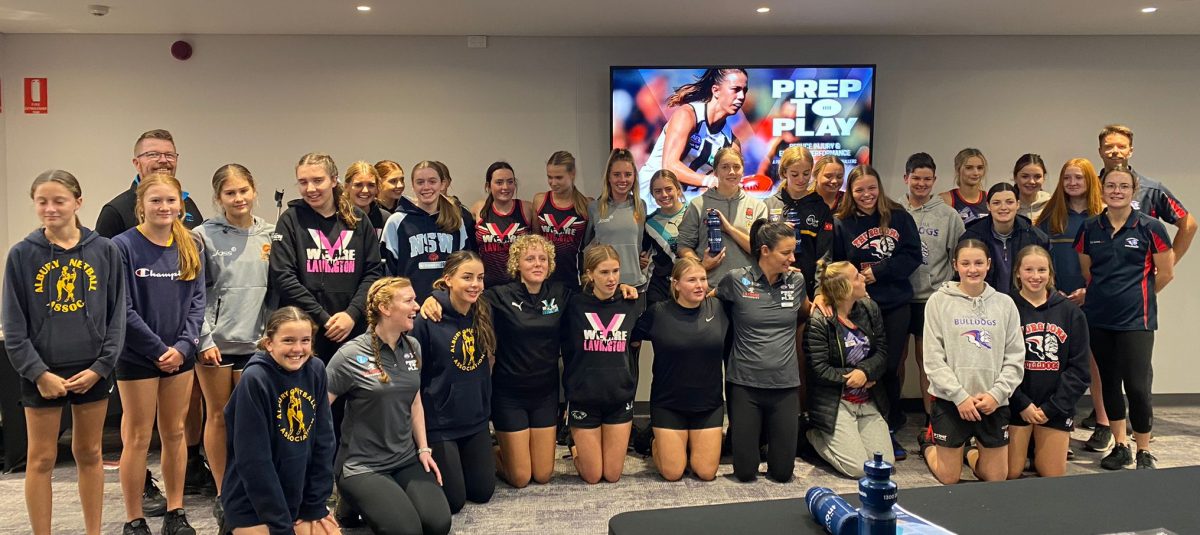
PROJECT UPDATES
Coming soon
The project intervention and data collection period ended in September 2022, and we are currently analysing the data.
Follow her__sport on Instagram to stay up to date. Subscribe to updates by emailing prep2play@latrobe.edu.au with the subject line: subscribe to Prep to Play mailing list



